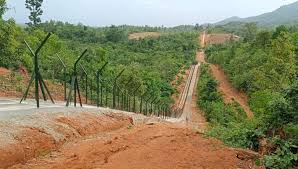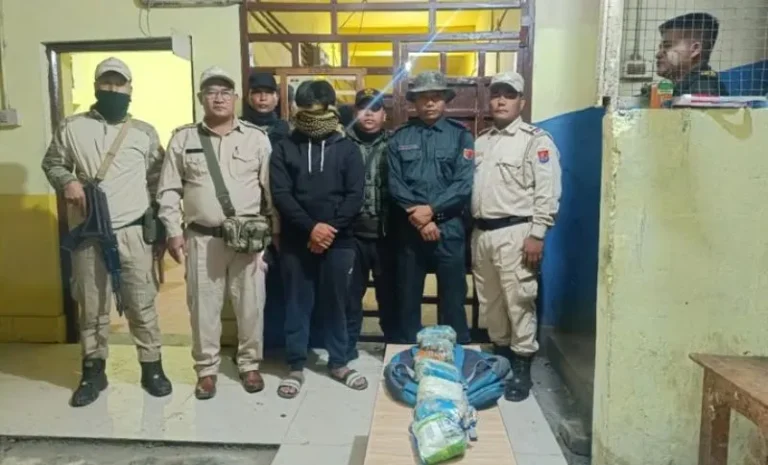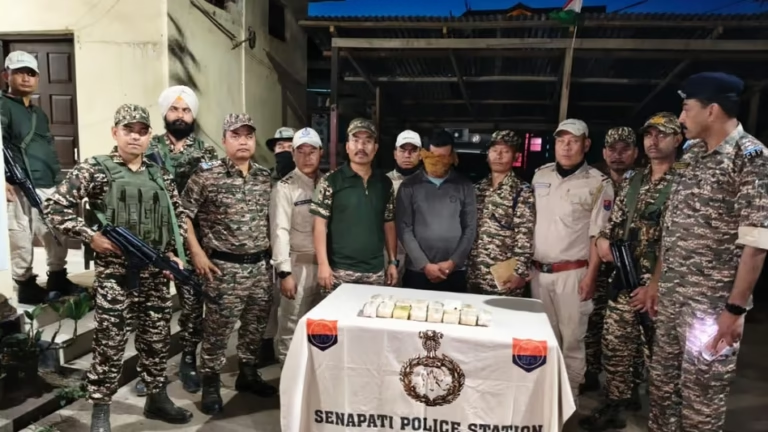Rongmei Civil Society Groups Urge Immediate Repair of Key Bridge in Manipur’s Tamenglong District
In the Tamenglong district of Manipur, a damaged bridge connecting Nrianglong and L Pabram villages has left local residents and travelers facing safety hazards and transportation issues. The Rongmei Civil Society Organizations (CSOs) recently appealed to the government, highlighting the urgent need for repair. This bridge serves as a crucial artery linking Tamenglong to Nagaland and, with its current state of disrepair, poses an imminent risk to the community. This article delves into the background, impact, and necessary steps to address this pressing infrastructure challenge.
The Importance of the Nrianglong-L Pabram Bridge
The bridge between Nrianglong and L Pabram villages is more than just a structure; it’s a lifeline for communities in Tamenglong, supporting daily movement, commerce, and connection to neighboring regions. In rural and hilly areas like Tamenglong, infrastructure plays a central role in access to education, healthcare, and economic opportunities. For this reason, a compromised bridge can isolate communities and restrict essential services.
But what exactly happened to this vital bridge? For over a year, it has deteriorated to the point where even routine crossings have become risky. Whether due to structural aging, natural erosion, or lack of maintenance, this bridge now stands as an obstacle in the path of thousands, calling for immediate government intervention.
What Has Led to the Bridge’s Deterioration?
Maintaining infrastructure in remote regions like Tamenglong is no small feat. The geography itself—hilly, dense with forests, and subject to challenging weather conditions—places high demands on construction and maintenance. Here are some potential reasons behind the bridge’s rapid deterioration:
- Harsh Weather Conditions: The Tamenglong region experiences monsoon rains that can erode soil and weaken foundations, especially on older infrastructure.
- Limited Funding and Resources: In many rural areas, funding for infrastructure upkeep is often inadequate, leading to delayed repairs and maintenance work.
- Frequent Use and Heavy Loads: As a key route, the bridge endures daily traffic that might exceed its intended capacity, accelerating wear and tear.
Without timely repairs, these issues have compounded, leaving the bridge in a precarious state.
Rongmei CSOs: Advocating for Community Safety
The Rongmei CSOs, a collective of civil society organizations representing the Rongmei community, have taken it upon themselves to be the voice of the people in demanding the bridge’s repair. Their advocacy reflects a broader movement among local communities in Manipur who seek government attention for basic infrastructure needs. The Rongmei CSOs have pointed out not only the safety concerns but also the economic and social impacts of an unusable bridge.
In rural communities, every delay in infrastructure repair has a direct impact on daily life. For children, this could mean days missed from school; for workers, it might mean loss of income due to travel limitations. By emphasizing these everyday realities, the CSOs are painting a picture that goes beyond statistics, showing how infrastructure affects lives on a personal level.
The Government’s Role: What Needs to Happen Next?
For any real solution to come forth, prompt government action is essential. The Rongmei CSOs have made it clear that they expect immediate attention, citing the following steps as crucial:
- Inspection and Assessment: The first step is for government engineers to inspect the bridge and assess the damage thoroughly. Understanding the full extent of deterioration will help plan the right type of repairs.
- Allocating Funds for Urgent Repairs: Emergency funds or reallocations might be necessary to prioritize the bridge in the state’s budget. Without financial support, even the best repair plans would remain unimplemented.
- Establishing a Timeline and Transparency: Communities affected by infrastructure issues are often left in the dark about timelines. Creating a clear, publicly available timeline for the repair process would help build community trust and accountability.
- Future-Proofing Infrastructure: After repairs, the government could consider strengthening the bridge against future environmental impacts. Using more resilient materials or implementing routine maintenance schedules could prevent similar issues down the line.
Broader Implications for Manipur’s Infrastructure
The state of infrastructure in Manipur, especially in remote districts like Tamenglong, has far-reaching implications. Roads, bridges, and transport networks enable not only the movement of people but also the movement of goods and services. For local farmers, being able to transport produce to markets can mean the difference between profit and loss. For the elderly or sick, a journey to the hospital could be a matter of life or death.
1. Economic Development and Access to Markets
Economic development in rural areas is directly tied to infrastructure. A broken bridge can sever access to markets, leading to losses for local farmers and traders. When infrastructure is reliable, it brings stability and predictability, encouraging businesses to grow and invest in the region. For a state like Manipur, which relies heavily on agriculture and small-scale industry, infrastructure is the foundation upon which economic success is built.
2. Quality of Life and Community Well-being
For residents, the quality of life is intertwined with accessible and safe infrastructure. When bridges, roads, or essential buildings are in disrepair, people face daily inconveniences, safety hazards, and a lower quality of life. Improving infrastructure isn’t just about facilitating movement—it’s about ensuring that residents can live without constant worry over basic travel and safety needs.
Potential Solutions and the Path Forward
Beyond addressing the immediate repair of the bridge, Manipur could explore sustainable infrastructure practices that consider future population growth, environmental impact, and regular maintenance.
1. Engaging Local Communities in Decision-Making
Local communities are often the first to know about deteriorating infrastructure. By actively involving them in planning and decision-making, governments can catch issues early and address them before they become severe. Creating channels for regular feedback and updates from communities can also help prioritize projects based on actual needs rather than assumptions.
2. Adopting Sustainable Building Practices
Using materials and techniques suited to Tamenglong’s unique environment could prolong the life of infrastructure in the region. Options such as reinforced concrete, weather-resistant materials, and foundation supports that accommodate soil erosion could help future projects withstand the elements.
Conclusion: Bridging the Gap Between Government and Communities
The Rongmei CSOs’ call for urgent action on the Nrianglong-L Pabram bridge serves as a reminder of the importance of reliable infrastructure in rural communities. This incident highlights not only the need for repairs but also the need for better planning, sustainable building, and a closer relationship between government and community voices.
As Manipur addresses this issue, a transparent, community-centered approach could set a valuable precedent for infrastructure management in other rural and remote areas. For now, the people of Tamenglong wait with hope, expecting that their calls for help will be met with swift, tangible action.
FAQs
- What is the significance of the Nrianglong-L Pabram bridge?
It’s a crucial link for residents, connecting Tamenglong with neighboring regions, enabling travel, commerce, and access to essential services. - What are the main challenges faced by Manipur in maintaining infrastructure?
Remote geography, limited funding, and environmental wear and tear all make it difficult to maintain infrastructure in rural areas. - How have the Rongmei CSOs responded to the bridge’s disrepair?
The Rongmei CSOs have demanded immediate government intervention, citing safety and daily life concerns for the community. - What steps can the government take to ensure long-term infrastructure stability?
Engaging local communities, allocating sustainable materials, and setting up regular maintenance schedules can make a significant difference. - Will repairing the bridge improve local economic conditions?
Yes, a functional bridge will improve access to markets, healthcare, and education, directly benefiting economic and social well-being.




